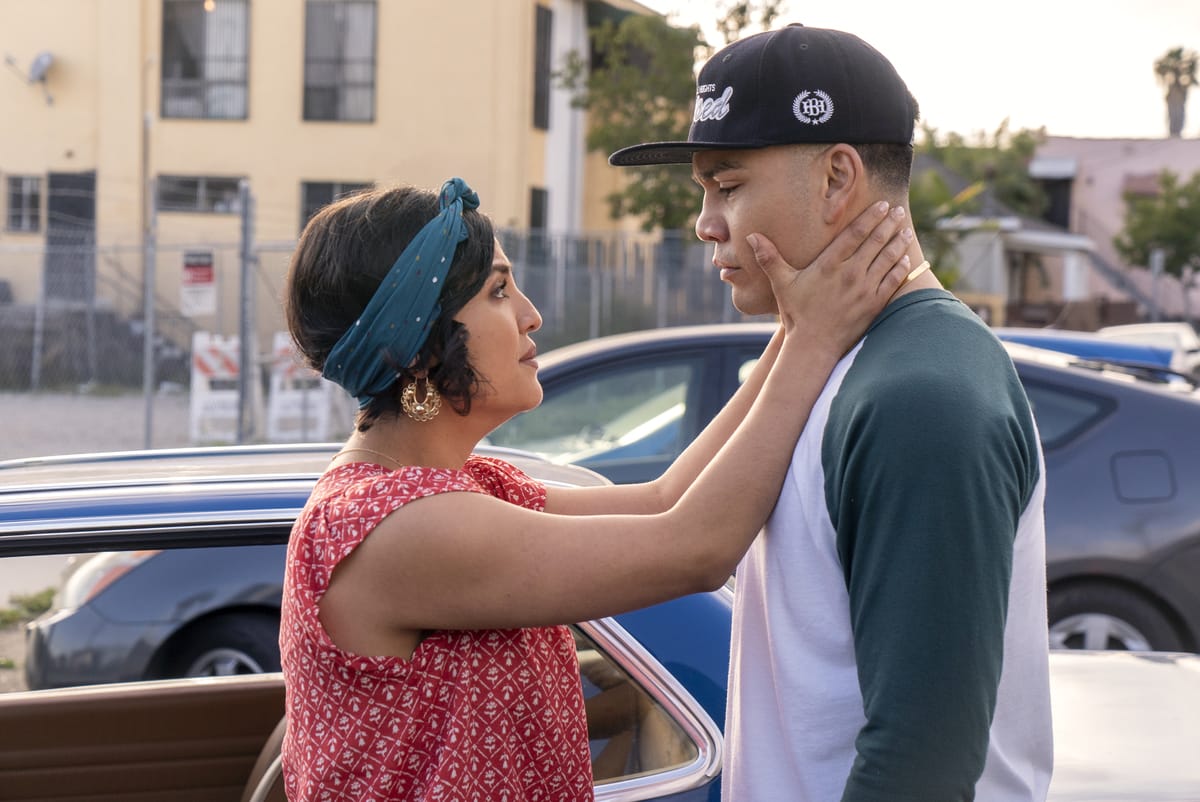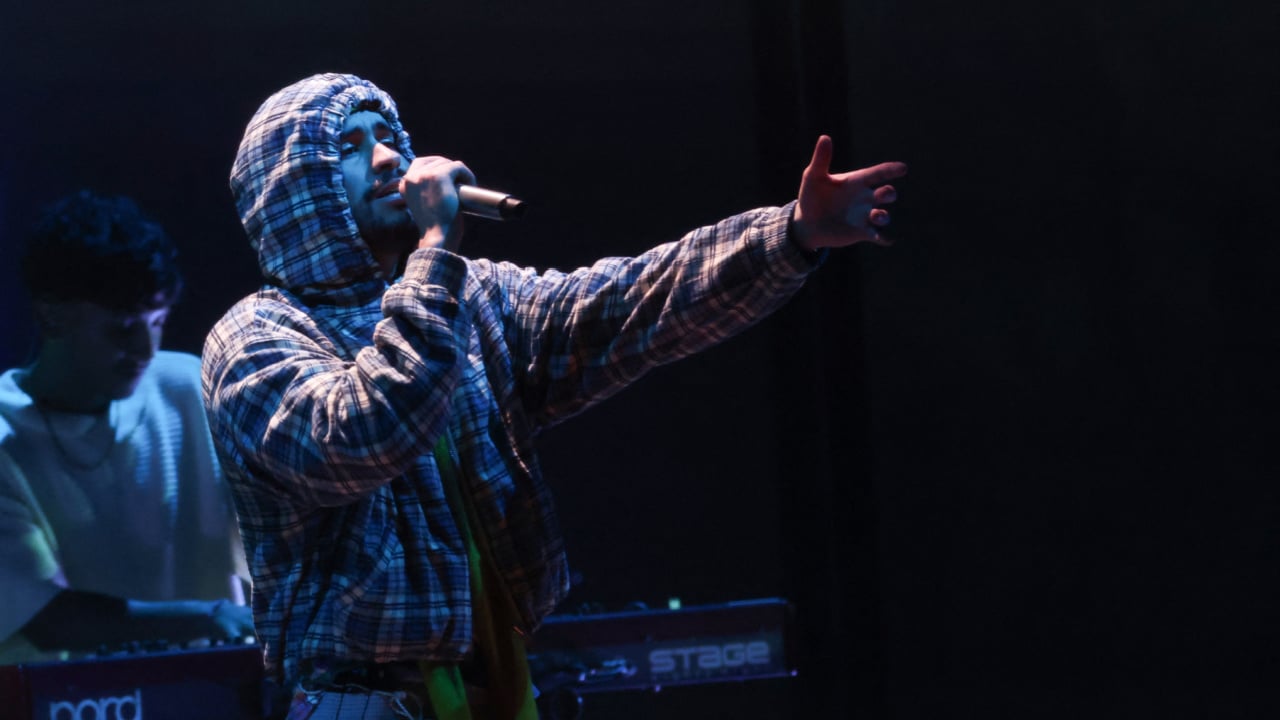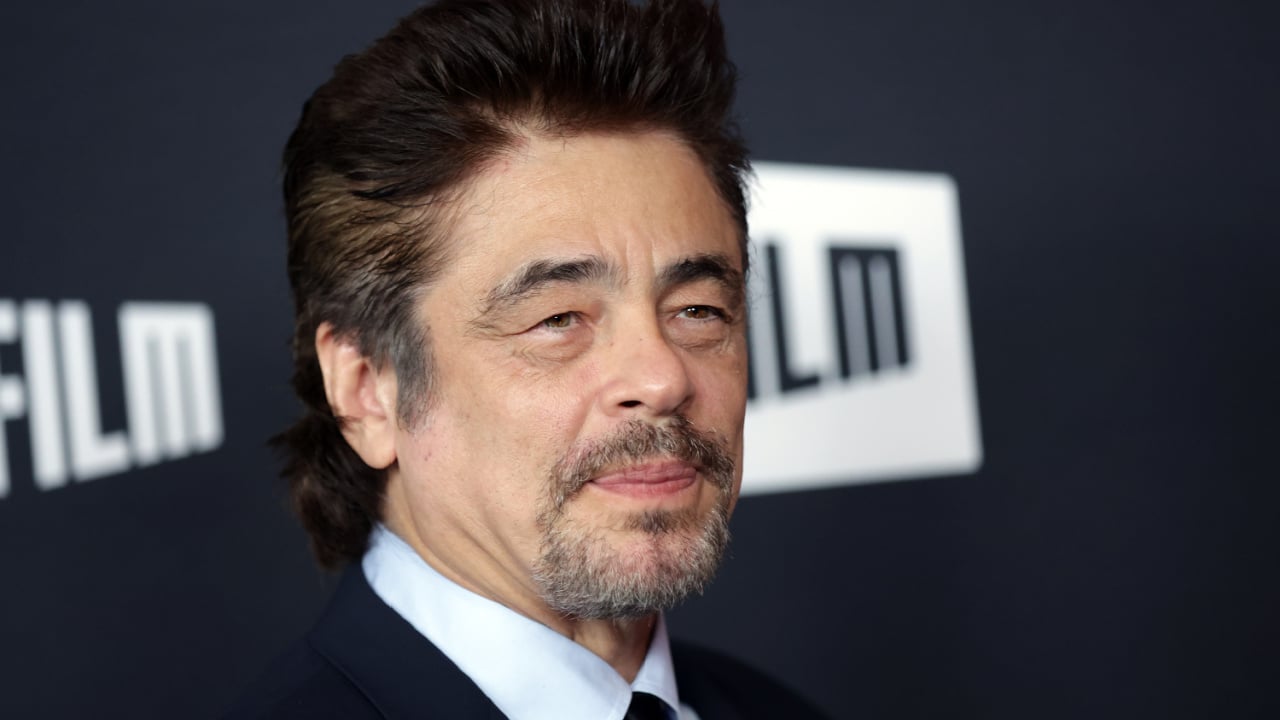Julissa Calderon And Annie Gonzalez On How ‘Gentefied’ Is Offering Empowerment And Representation In This New TV Era
Netflix’s show “Gentefied” is finally out and we all get to see the love story written to the Los Angeles neighborhood of Boyle Heights. The show is complete with discussions of the complexities of gentrification, bilingual jokes, and a cast that is the embodiment of #RepresentationMatters.
The show centers around the Morales family’s taco shop made up of patriarch “Pop” (played by Joaquín Cosío) and his grandchildren Erik (played by JJ Soria), Ana (played by Karrie Martin) and Chris (played by Carlos Santos). It is set in the Los Angeles neighborhood of Boyle Heights, an area with a population makeup of 94 percent Latinos, a median age under 25, and where the average income is under $34,000, according to a Los Angeles Times profile.
In “Gentefied,” the Morales family is trying to save their weathering taco shop Mama Fina’s Tacos from being eaten up by the interests of corporate real estate developers and Westside yuppies. In order to keep Pop from closing the doors, Erik, Ana, and Chris try their hand at making fusion tacos or encouraging the children of patrons to read more books in exchange for free tacos.
Ana’s strong activist girlfriend Yessika (played by Julissa Calderon), and Erik’s baby mama and first love professor and podcast host Lidia (played by Annie Gonzalez) make up the rest of the circle.

The type of support Lidia gives to Erik is a kind of #BrownLove we are all here for. We are also excited to see queer Afro-Latinas represented in a show about the importance of embracing everyone’s Latinidad.
Calderon and Gonzalez are just as impassioned off-screen as their characters are on-screen when it comes to issues affecting Latinos.

“Gentefied” encourages its viewers to love who you want, no matter what las chismosas de la vecindad say.
Mitú recently chatted with Calderon and Gonzalez at the Netflix Los Angeles office to talk more about how gentrification has affected them personally and what messages do they want to extend to audiences members as characters Yessika and Lidia.
“I think that’s what this show is doing, it’s just creating space for a group of people who never felt seen or heard, and we are so honored and humbled to be part of a project like this,” Gonzalez said about what Gentefied means to her.
The show’s characters portray the push and pull that gentrification can cause.
Oftentimes it is at the expense of minorities who are already struggling to pay rental prices. We have seen this happen in communities across the nation with Boyle Heights currently in that fight.
“Gentrification, it affects the minorities. Even though you look at statistics, and we are the majority as far as population is concerned (we make up a large population), we’re still the minority when it comes to politics, and anybody else that has the say on how things are ran.
I’m born and raised in East LA, so I’ve seen first hand how gentrification has affected the people in my community, my family members,” Gonzalez said.
The writers of “Gentefied” are able to have such a high level of authenticity because its cast and crew have lived these changes themselves.
Gonzalez said her own grandmother had to move east to Ontario, Calif., to find affordable housing. Calderon said the Carol City area of greater Miami she knew growing up has completely transformed with different developments, pushing out flea market shop owners and going as far as to re-brand itself as Miami Gardens (now home to the Hard Rock Stadium.)
“And yes, this story is in East LA, but this is resonating with so many different neighborhoods all around the country,” Calderon added.
Calderon then shared a story of her grandmother’s Washington Heights neighborhood in New York which is now crawling with hipsters, a change she was taken a bit aback by.
“Before, no one would even walk in those neighborhoods, so it’s definitely interesting to see the turn of events, and unfortunately it’s affecting people of color—always,” Calderon stated.
Although these gentrification changes are affecting people of color disproportionately, the show portrays a sense of hope and proactiveness by its characters to not only save the cultural roots of their neighborhood but to also help open the minds of the older generation who are grappling with their sense of a changing world.
Calderon’s Yessika character proudly displays her Afro-Latinidad and lesbian love affair to the world while fighting back.
Yessika shows #BlackGirlMagic is sparkling in the streets of Boyle Heights.
“I think my character has two messages—one is that she is a Black girl who speaks Spanish and she is proud of it. She owns the skin she’s in. She owns this curly ‘fro that she has. She knows where she comes from,” Calderon exclaimed. She continued, “my character is just not a sell-out. She stands for what she believes in and she doesn’t care if she’s going against everyone else. She’s aware of what’s at stake and she’s aware of what’s important, and she’s for the people.”
Calderon has embraced her full Afro-Latindad through Yessika and is ready to see the impact that representation will have for the next generation.
“I just want these little girls in these neighborhoods to be like, ‘OMG! That’s me!’ I can see that, because I don’t recall seeing that as a child on TV. The novelas we used to see, everybody was very white-washed, blue eyes, blonde hair—that was the go-to market. We’re changing that sh*t.”
Gonzalez wants her character to convey a clear message of empowerment while attaining your wildest dreams.
Lidia proves you can do it all (and do it in your style of hoop earrings and turban headband!)
“Lidia, she’s strong, confident, educated, born and raised in the ‘hood, [who] doesn’t need to code-switch to convey her intelligence. She’s empowering the Latinidad to get an education, but not to abandon their roots, thinking that her community is worth pouring into,” Gonzalez had to say about her character.
Gonzalez added the show’s characters can resonate with audiences because each person knows someone like these characters. She said the example of the love story between Erik and Lidia, in which they each allowed each other to be equally sensitive and powerful, allowed her to find healing within herself.
“I found so much healing through Erik and Lidia’s story via my parent’s severed relationship. I felt I was able to make the ending they weren’t able to have,” Gonzalez shared in the interview.
The show’s creators, Linda Yvette Chavez and Marvin Lemus knew that these types of stories would resonate because it’s their stories.
It’s a side of America that is finally being shown but was always there.
The cast and storylines of “Gentefied” prove that the Greater Los Angeles area (and all neighborhoods in general) need to learn that pockets of working-class neighborhoods ARE worth pouring into and exploring—because the small businesses, the parks, the art, the people—they all have value. Having a supermercado instead of a Whole Foods grocery store does not make the history or culture of a city any less important.




